Welcome to Catnapin's
Grass Gallery
Poaceae, Panicoideae, Paniceae - Panicgrass
(Family, Subfamily, Tribe)
Same Genus name as Witchgrass

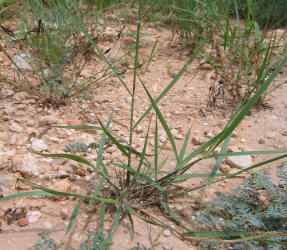
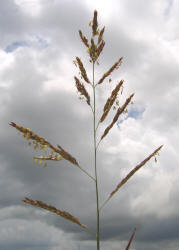
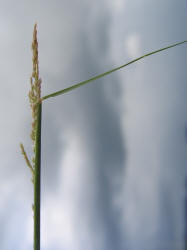
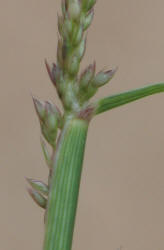
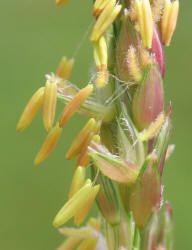
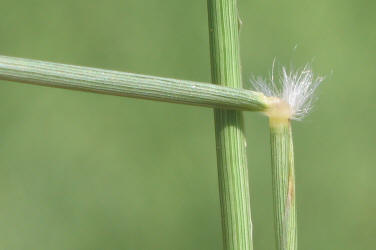
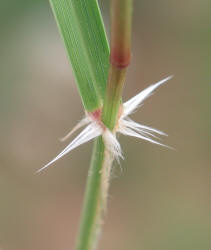
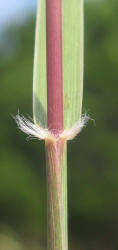
tribe Paniceae
Kleingrass (Blue Panicgrass) Panicum coloratum
Photos taken in Taylor County, Texas, July 2007
(cultivated, native of Africa)
Base: perennial, knotty base, no rhizomes, no stolons (runner stem)
Blade (leaf): elongate, 2-8mm wide
Sheath (leaf part encircling stem): glabrous with fringed ligule
Culm (main grain stem): erect, 60-135cm tall
Inflorescence: 8-25cm long, freely branching branches
Spikelet: 2.8-3.2mm long, on short pedicels
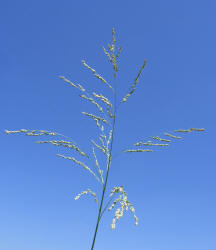
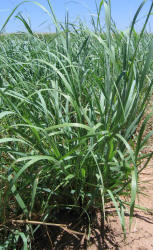
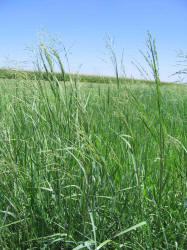
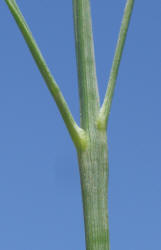
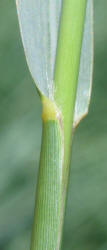
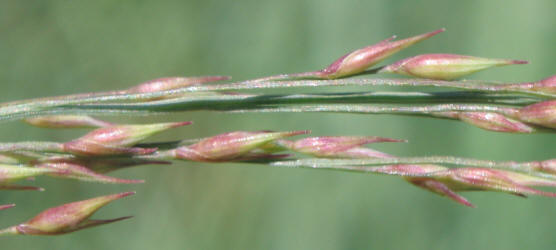
tribe Paniceae
Switchgrass (Wand Panicgrass) Panicum virgatum var. virgatum
Switchgrass takes 3 years to mature fully. Permanent roots can reach 10 feet deep, temporary roots improve soil by adding organic matter and water infiltration. Excellent for erosion control. Likes moist bottom lands but will tolerate dryer areas also. Excellent cattle food. Plants provide food and shelter for many animals including turkey and quail.
Photos taken in Floyd County, Texas, August 2007
(Cultivated, native of Texas - Taylor, Brown)
Base: perennial, small clumps (to 20 wide), scaly creeping rhizomes, no stolons (runner stem)
Blade (leaf): elongate, 3-15mm wide
Sheath (leaf part encircling stem): glabrous, round, with fringed ligule
Culm (main grain stem): erect, up to 3 meters tall
Inflorescence: open panicle 15-55cm long, freely branching branches
Spikelet: 3-5mm long, on short pedicels
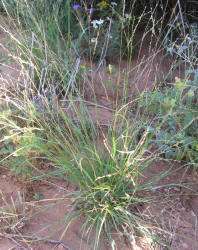
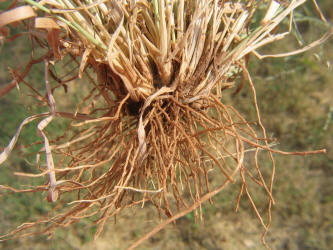
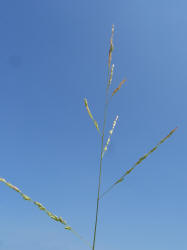
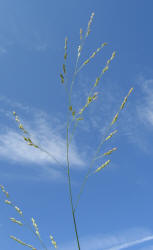
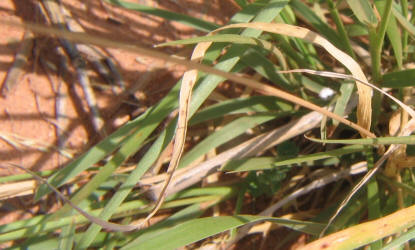
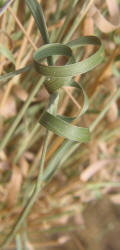


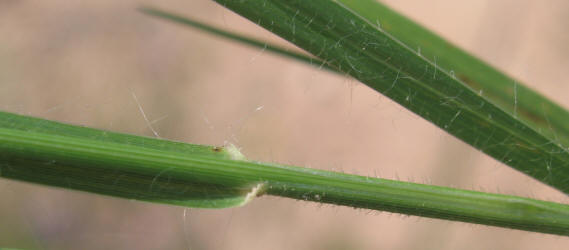
tribe Paniceae
Hall's Panicgrass Panicum hallii
Leaves curl as they dry. Fair cattle forage. Invades overgrazed land.
Photos taken in Taylor County, Texas, August-September 2007
(Native of Texas - Taylor, Coleman, Brown)
Similar Variations
Hall's Panicgrass Panicum hallii var. hallii (Panicum lepidulum)
Leaves stiff and curl as they dry.
Plant grows 6"-20" tall. Open panicle, pointed ovoid spikelets.
(Native of Texas)
Base: perennial, no rhizomes, no stolons (runner stem)
Blade (leaf): waxy, stiff, curling on drying, hairy, 4-30cm long, 2-10mm wide
Sheath (leaf part encircling stem): equal or shorter than internodes, sparse hairs, hairy ligule
Culm (main grain stem): erect, stiff, waxy, 20-80cm tall, nodes have ascending hairs
Inflorescence: Open pyramidal panicle, 4-20cm long, less than 15 branches with appressed spikelets
Spikelet: 2.2-3.7mm long, 1-1.5mm wide, glabrous, pointed, short appressed pedicel
First Glume: 1/3-2/3 length of spikelet, pointed
Second Glume & Lemma: length of spikelet
Filly Panicgrass Panicum hallii var. filipes (Panicum filipes)
Same as var. hallii except leaves are more lax and less curly. Panicles are larger with more branches, rebranching. Smaller spikelets. Less hairy.
(Native of Texas)
Blade (leaf): lax, slightly curling on drying, mostly glabrous,
Sheath (leaf part encircling stem): mostly glabrous
Culm (main grain stem): taller, nodes are glabrous or have very short hairs
Inflorescence: taller panicle, often more than 15 branches with appressed spikelets on secondary branches
Spikelet: shorter
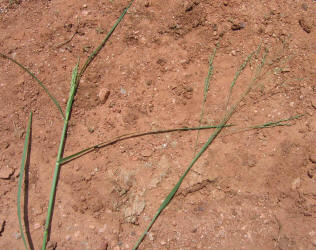
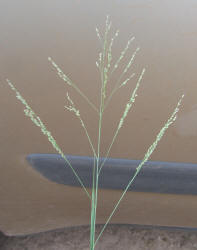
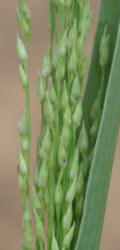
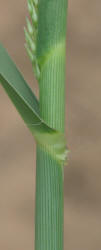
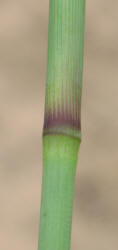
tribe Paniceae
Fall Panicgrass (Spreading Witchgrass) Panicum dichotomiflorum
Loose open panicle, not whirled, well exerted from sheath. Secondary branches have multiple spikelets and nude base. Tiny, long spikelet with short glum. Sheathes are not hairy.
Photos taken in Taylor County, Texas, July 2007
(Native of Texas - Jones, Brown)
Other Species In My Area
West Indian Panicgrass Panicum diffusum
(Native of Texas - Taylor)
Vine-mesquite (Wiregrass, Blunt Panicgrass) Panicum obtusum
Plant height 8"-24" tall. Large round spikelets (red lips) are tightly clustered on stem. Hairy collar on leaf. Leaf 2"-8" long, 1/16"-5/16" wide, has white rib line. Stolons has swollen nodes, can be several feet long. Tillers, and rhizomes. Seed eaten by quail and dove. Plant is good cover and eaten by many wild animals. It is good forage and can withstand heavy grazing.
(Native of Texas - Taylor, Jones, Shackelford, Runnels, Coleman, Brown)
|
Also see: |
Copyright Notice: All photos are copyrighted and protected by the laws of the United States.
Unauthorized duplication for sale or distribution is prohibited.